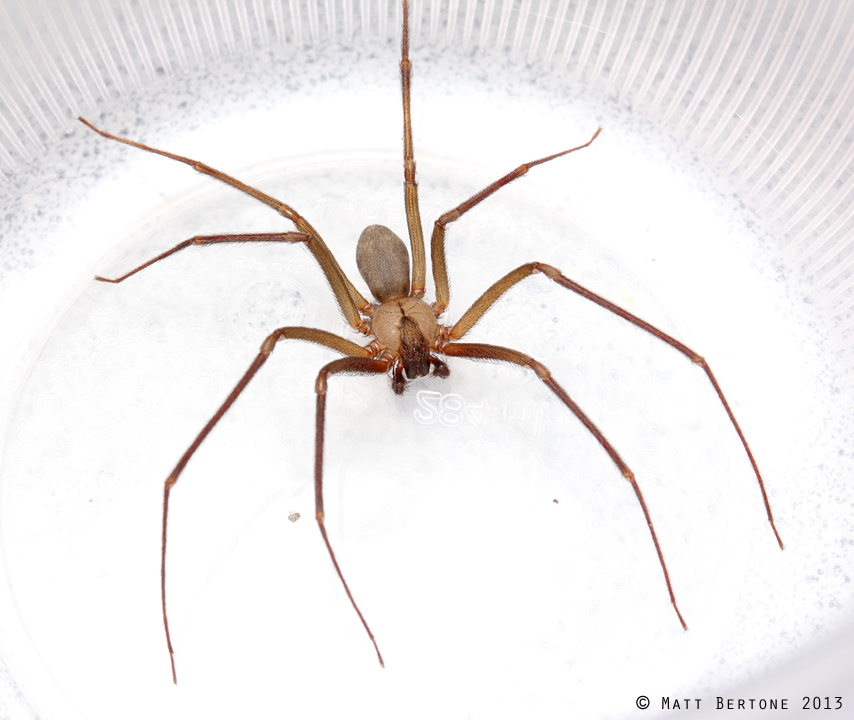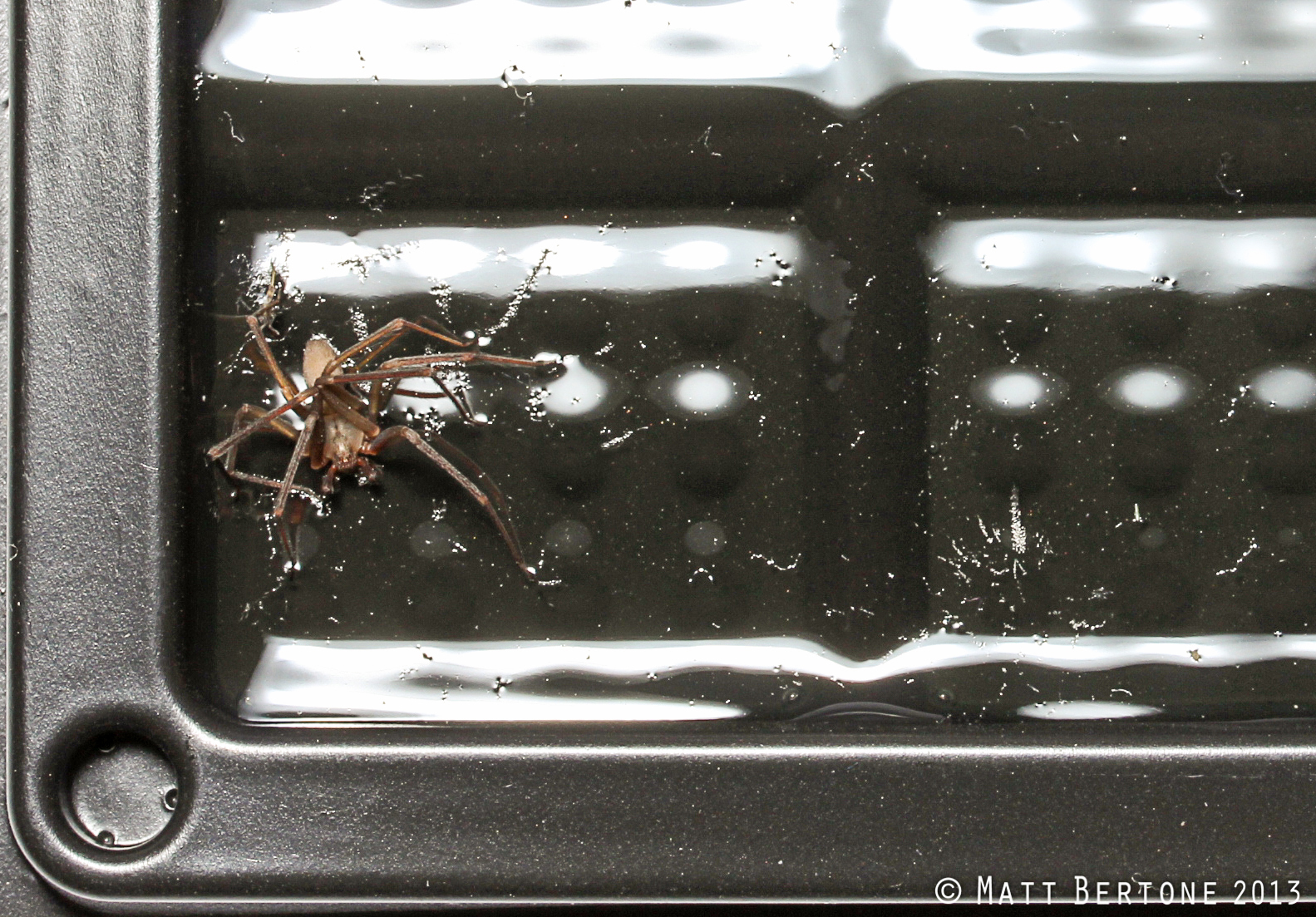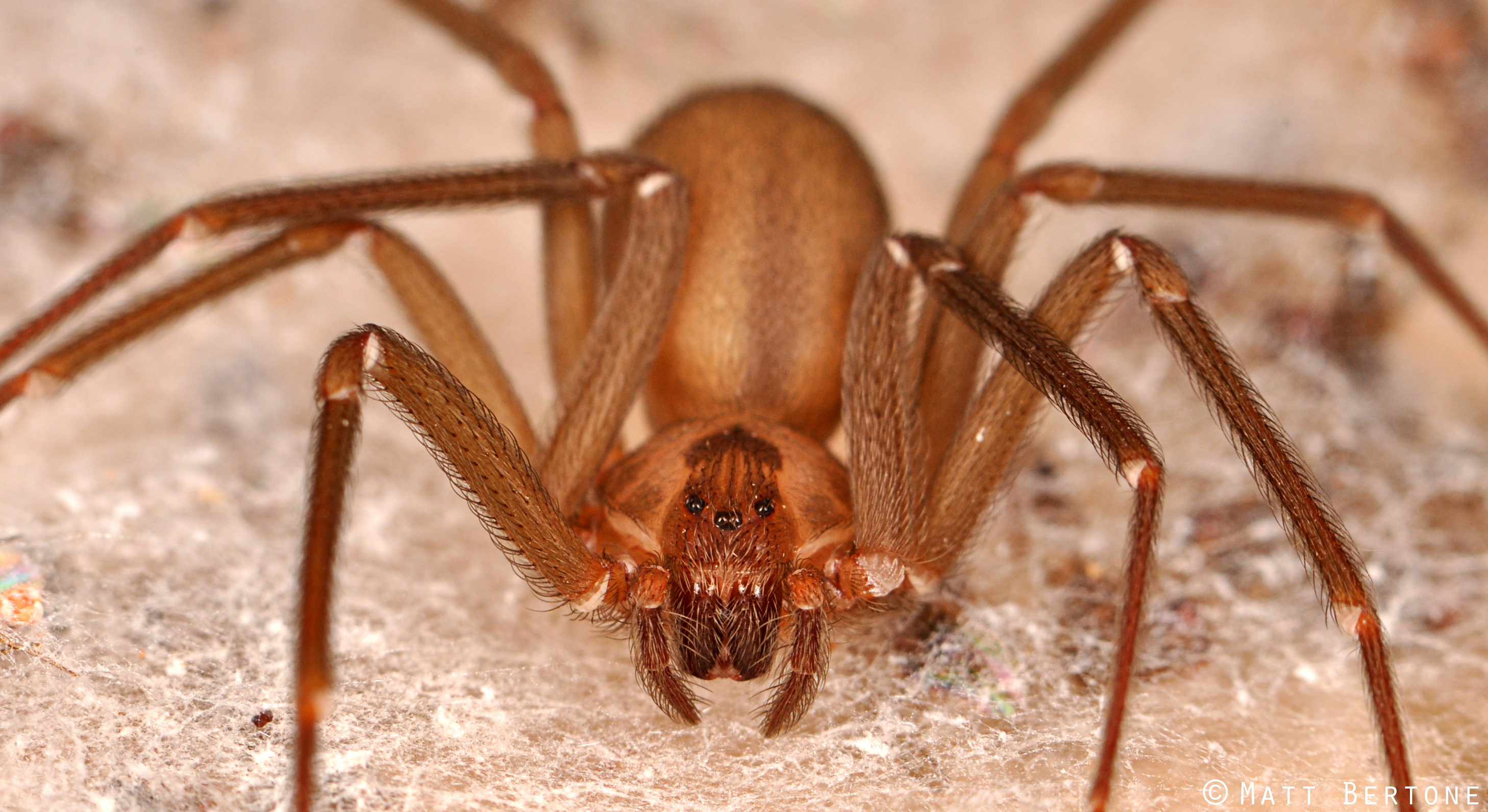Two Cases of Recluse Spider Bites in NC
go.ncsu.edu/readext?258784
en Español / em Português
El inglés es el idioma de control de esta página. En la medida en que haya algún conflicto entre la traducción al inglés y la traducción, el inglés prevalece.
Al hacer clic en el enlace de traducción se activa un servicio de traducción gratuito para convertir la página al español. Al igual que con cualquier traducción por Internet, la conversión no es sensible al contexto y puede que no traduzca el texto en su significado original. NC State Extension no garantiza la exactitud del texto traducido. Por favor, tenga en cuenta que algunas aplicaciones y/o servicios pueden no funcionar como se espera cuando se traducen.
Português
Inglês é o idioma de controle desta página. Na medida que haja algum conflito entre o texto original em Inglês e a tradução, o Inglês prevalece.
Ao clicar no link de tradução, um serviço gratuito de tradução será ativado para converter a página para o Português. Como em qualquer tradução pela internet, a conversão não é sensivel ao contexto e pode não ocorrer a tradução para o significado orginal. O serviço de Extensão da Carolina do Norte (NC State Extension) não garante a exatidão do texto traduzido. Por favor, observe que algumas funções ou serviços podem não funcionar como esperado após a tradução.
English
English is the controlling language of this page. To the extent there is any conflict between the English text and the translation, English controls.
Clicking on the translation link activates a free translation service to convert the page to Spanish. As with any Internet translation, the conversion is not context-sensitive and may not translate the text to its original meaning. NC State Extension does not guarantee the accuracy of the translated text. Please note that some applications and/or services may not function as expected when translated.
Collapse ▲*The issue of dangerous spiders is a sensitive one that elicits many emotions. In order to better understand the situation please read the entire article in full and follow the links for more information.
The brown recluse (Loxosceles reclusa) is one of the most feared spiders in the world. It’s venom is strong and can sometimes lead to skin lesions and systemic issues that have the potential to result in death. Although brown and other recluse spiders (Loxosceles sp.) are not native to most of North Carolina – distribution maps often include only the western most tip – they sometimes turn up in human structures across the state. In these homes, buildings, barns or other structures they may reproduce and persist for many years, building up a good number of spiders. Recluses do not, however, travel between indoor habitats without human intervention – thus they are not common throughout the state even after being present for many decades.
Spider bites are very rare, and recluse spiders are not aggressive (thus their reclusive nature). However, sometimes humans come into contact with these arachnids and bites occur because the spider feels its life is threatened. The results of such bites were documented in our recent publication on the first two reported cases of systemic loxoscelism (i.e. envenomation by Loxosceles spiders) in North Carolina [Clinical Pediatrics, Early Edition, December 2013]. Both cases were in children (ages 9 & 12). One awoke from sleep to a painful lesion on the upper arm and a dead spider on the pillow. The spider was identified as a male brown recluse, and the symptoms and treatment followed typical loxoscelism. The second child did not have a spider present at the time of symptoms, but followed a similar path as the other case; a follow up in the home revealed several dead female recluse spiders. This strongly suggests that the patient had also been bitten by one of these rare spiders. Both cases were extremely serious, almost resulting in death. Thus the paper was initiated because the attending physicians felt that, had they known the possibility and progression of recluse bites (and having not been trained due to the rarity outside of the spider’s range), they may have been better prepared to minimize the resulting issues.
All of this might cause citizens to lose sleep or use heavy amounts of pesticides in homes, but those who live in North Carolina (or any other state outside the spider’s range) are likely to never encounter a recluse spider in their lifetime. Again and again, states outside of the natural range of recluse spiders report many more cases of supposed “spider bites” than actual specimens have ever been found. On a personal note, until I was guided to homes that have known populations I had never seen a recluse spider in over a decade of being an entomologist in the state. Even a survey of the arthropods in 50 Raleigh (NC) homes failed to turn up a single recluse or evidence thereof (unpublished data).
Furthermore, even when there are many thousands of these spiders in a home in their native range, very few (if any) bites occur. In addition, when bites occur they often do not cause serious conditions. So what is really biting people? “Spider bites” almost always turn out to be some other affliction, from flesh-eating bacteria (particularly MRSA) to herpes.
So what’s the take home message? Recluse spiders have been known to inhabit a handful of NC homes and other buildings, but there is almost no chance that they will be in yours. Doctors should be aware of the rarity of spider bites, but be prepared to rule out all other conditions and pay close attention to the symptoms described in the paper above. Also, suspect spiders should always be collected (if possible) for positive identification, preferrably into a container of rubbing alcohol. If you think you may have recluse spiders in your home (which you should easily know by their numbers):
- make sure you have the correct spider – There are hundreds of species in the state, many of which are brown. Ask yourself these questions: 1) Is it inside a web? 2) Does it have stripes or other patterns on the legs and abdomen? 3) Do its legs have heavy spines? 4) Does it have 8 eyes? 5) Was it outside? If you answered YES to any of them, then it is not a recluse spider.
- put out sticky traps to monitor for their presence – Though indiscriminite in what they capture, these traps are good at trapping spiders like recluses that like to wander when you are not around. Place them in areas out of reach of children and pets and where recluses like to walk such as on floors along walls, at corners and under furniture.
- send specimens to an expert – In NC, services like the Plant Disease & Insect Clinic will identify spiders and other insects of interest. Most other states also have similar services.

This adult male has a leg span just bigger than a quarter and a body length of just under a dime
If you have confirmed the presence of recluse spiders:
- call a pest control operator for treatment options
- reduce their habitat & food sources – Keep floor clutter to a minimum as recluses love to hide between and under things. Seal crevices, cracks and gaps in walls and flooring. Reduce the number of living (and dead) insects in your home – unlike most spiders recluses are known to scavenge dead insects as well as hunt.
- reduce chances of contact – Pull beds away from walls and make sure to check places for spiders when handling items. Before use, check shoes, clothing, blankets and towels stored in areas with known spider activity. Also wear gardening gloves while moving items in areas with suspected recluses.

Brown recluse caught on a sticky trap
Again, it must be reiterated that those living in NC will likely never see a recluse spider and the two envenomation cases that happened this year are probably due to chance rather than a growing prevalence of these medically important spiders. Spiders in general should be respected instead of feared – they do much more good for us than they do harm.



